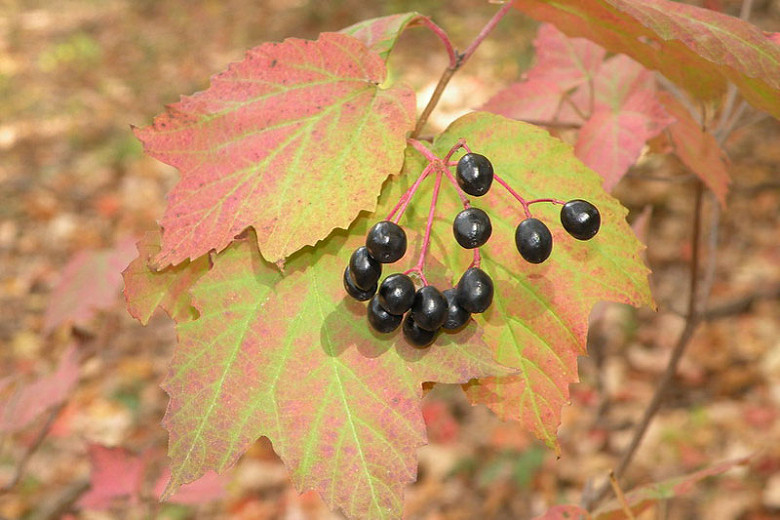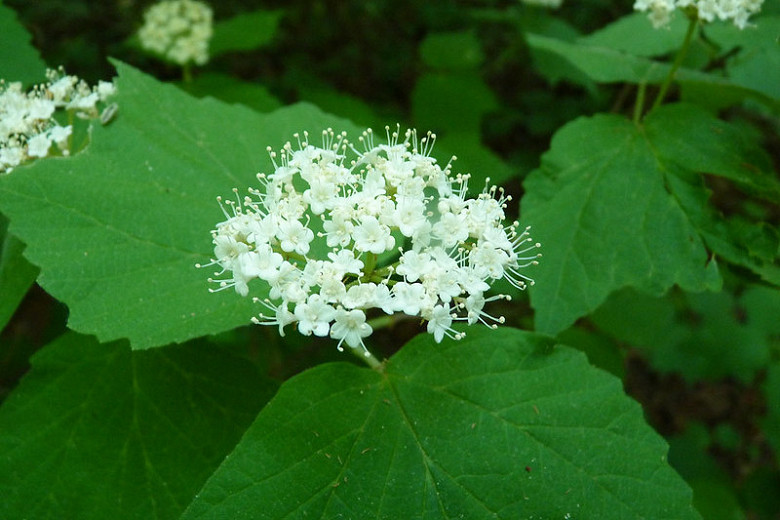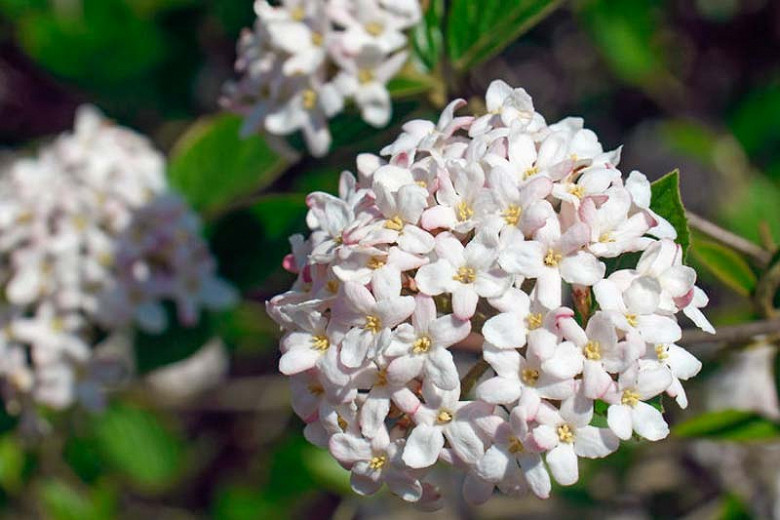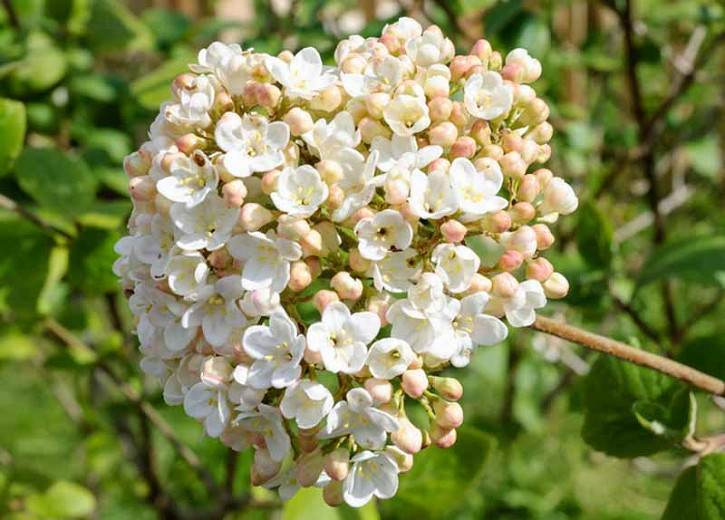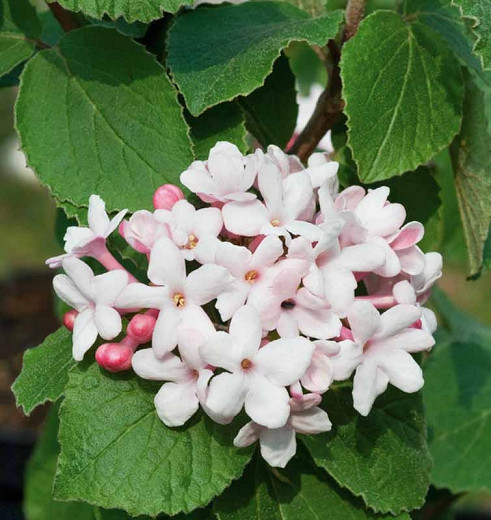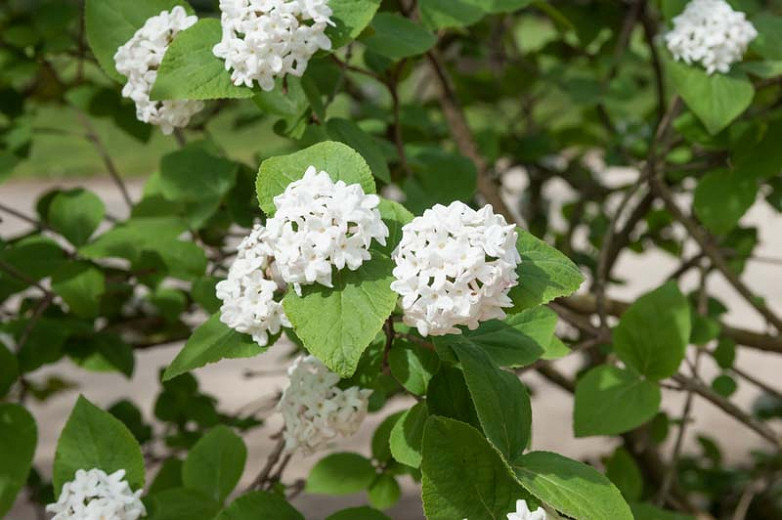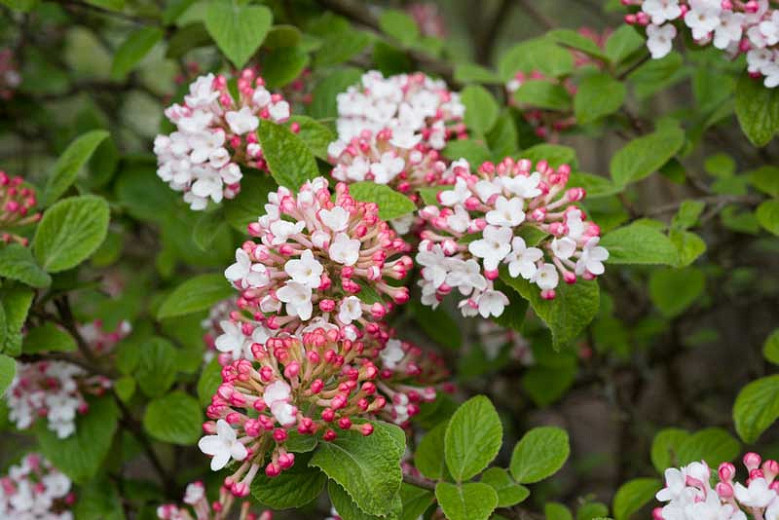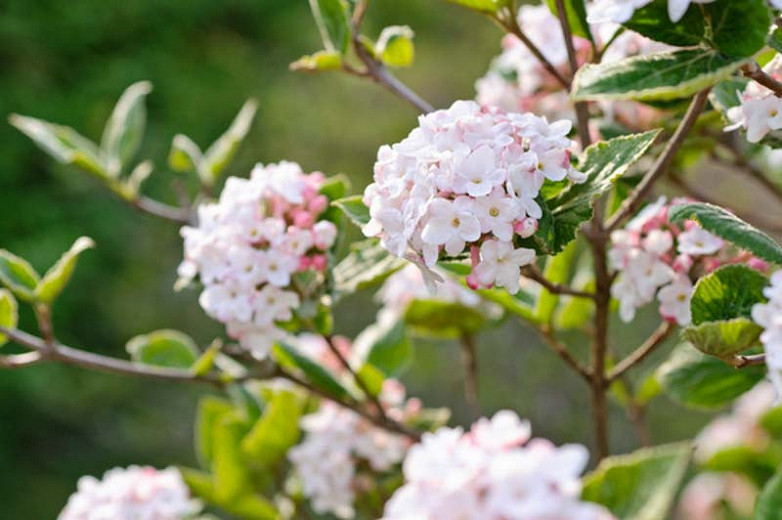Viburnum acerifolium (Mapleleaf Viburnum)
Viburnum acerifolium (Mapleleaf Viburnum) is a densely branched, deciduous shrub with a profusion of flat upright clusters packed with tiny white flowers from spring to late summer. Attractive to butterflies, they are followed by red berries that ripen to blue-black in late summer. Hungry birds feast on them. Its spreading, ascending branches are clothed with bright to dark green maple-like leaves, 2-5 in. long (5-12 cm), which turn brilliant reddish-purple to magenta in the fall. Native to eastern North America, Mapleleaf Viburnum occurs naturally in upland forests, woodlands, ravine slopes, and hillsides. Shade tolerant, it grows in well-drained, moist soils and is particularly tolerant of acid soils. Mapleleaf Viburnum is rhizomatous and can form dense thickets if suckers are not removed. It has been cultivated since 1736 for its attractive flowers and foliage. This woodland shrub provides good nesting and escape cover for numerous species of birds and small mammals.
- Grows up to 3-6 ft. tall (90-180 cm) and 2-4 ft. wide (60-120 cm).
- Performs best in part shade in average, dry to moist, well-drained soils. Tolerates full sun but requires partial shading for optimum growth and development. Tolerates a wide range of soil types, acidity, and moisture but is happiest in moist, acidic, well-drained soils.
- Good for shrub borders, hedges, and screens or foundation plantings. Great for open woodland gardens.
- Low maintenance, this plant has no serious pest or disease issues.
- Prune as needed immediately after flowering.
- Native to eastern North America from southwestern Quebec and Ontario south to northern Florida and eastern Texas.
Requirements
| Hardiness | 4 – 8 |
|---|---|
| Heat Zones | 1 – 8 |
| Plant Type | Shrubs |
| Plant Family | Viburnum |
| Exposure | Full Sun, Partial Sun, Shade |
| Season of Interest | Spring (Mid,Late)Summer (Early,Mid,Late)Fall |
| Height | 3' – 6' (90cm – 180cm) |
| Spread | 2' – 4' (60cm – 120cm) |
| Spacing | 36″ – 48″ (90cm – 120cm) |
| Water Needs | Low, Average |
| Maintenance | Low |
| Soil Type | Clay, Loam, Sand |
| Soil pH | Acid, Neutral |
| Soil Drainage | Moist but Well-Drained, Well-Drained |
| Characteristics | Showy, Fruit & Berries |
| Native Plants | United States, Midwest, Illinois, Indiana, Michigan, Ohio, Wisconsin, Northeast, Connecticut, Delaware, Maine, Massachusetts, Maryland, New Hampshire, New Jersey, New York, Pennsylvania, Rhode Island, Vermont, Southeast, Alabama, Arkansas, Florida, Georgia, Kentucky, Louisiana, Mississippi, North Carolina, South Carolina, Tennessee, Virginia, West Virginia, Southwest, Texas |
| Tolerance | Dry Soil |
| Attracts | Birds, Butterflies |
| Garden Uses | Beds and Borders, Hedges and Screens |
| Garden Styles | Informal and Cottage, Prairie and Meadow, Traditional Garden |
